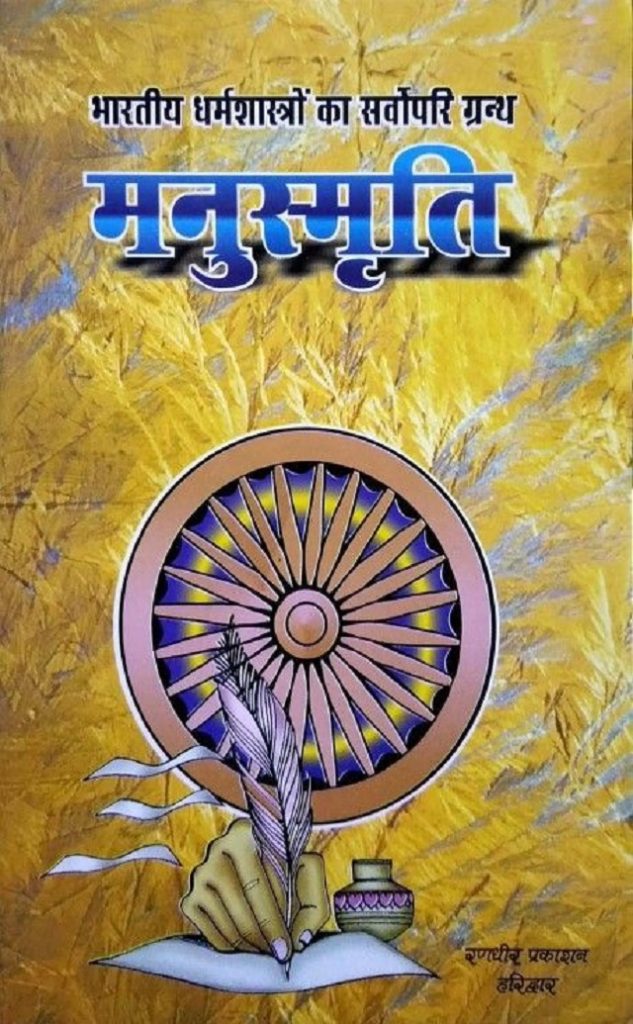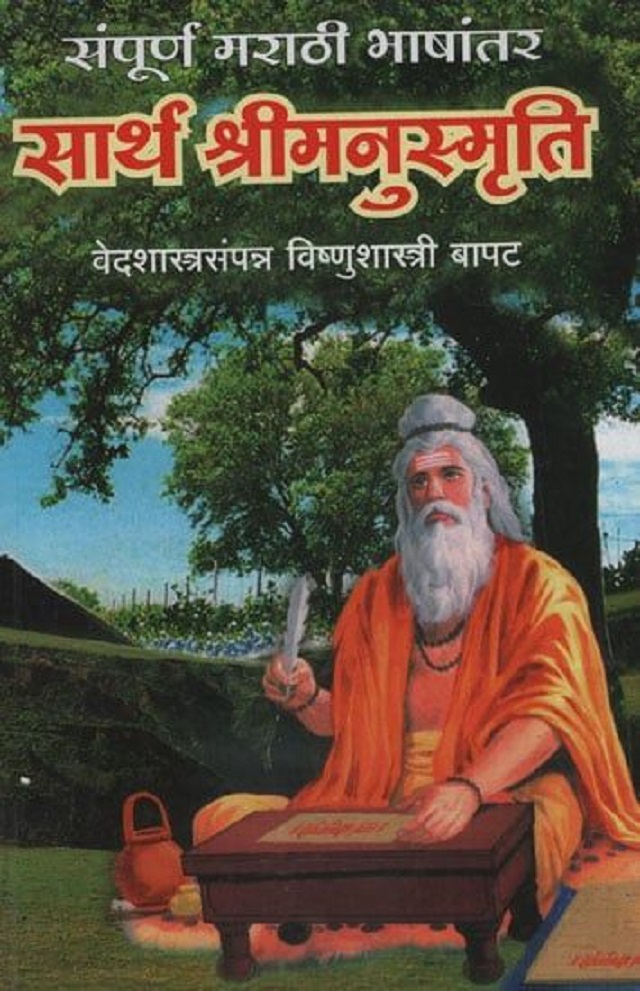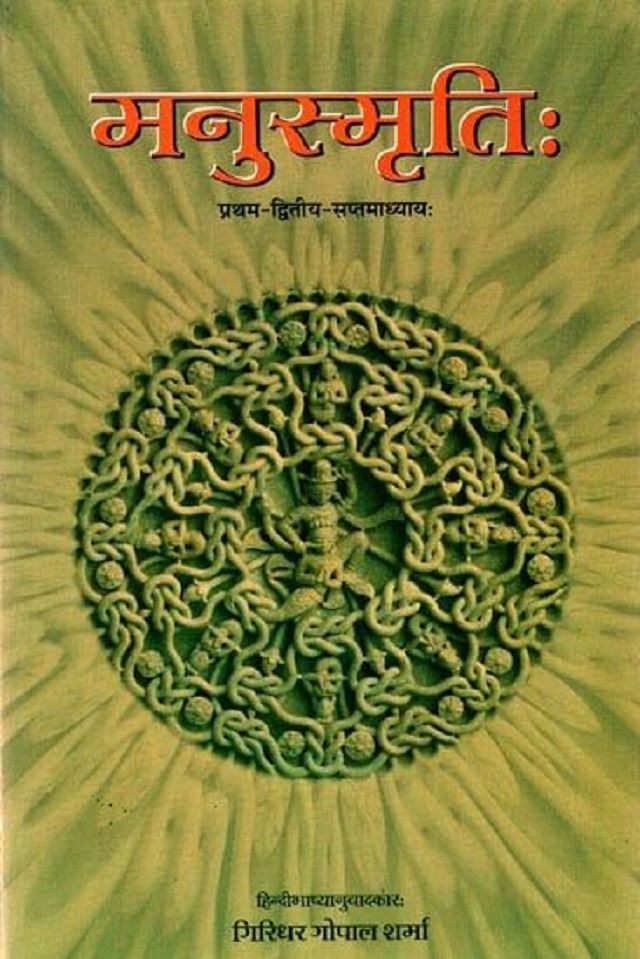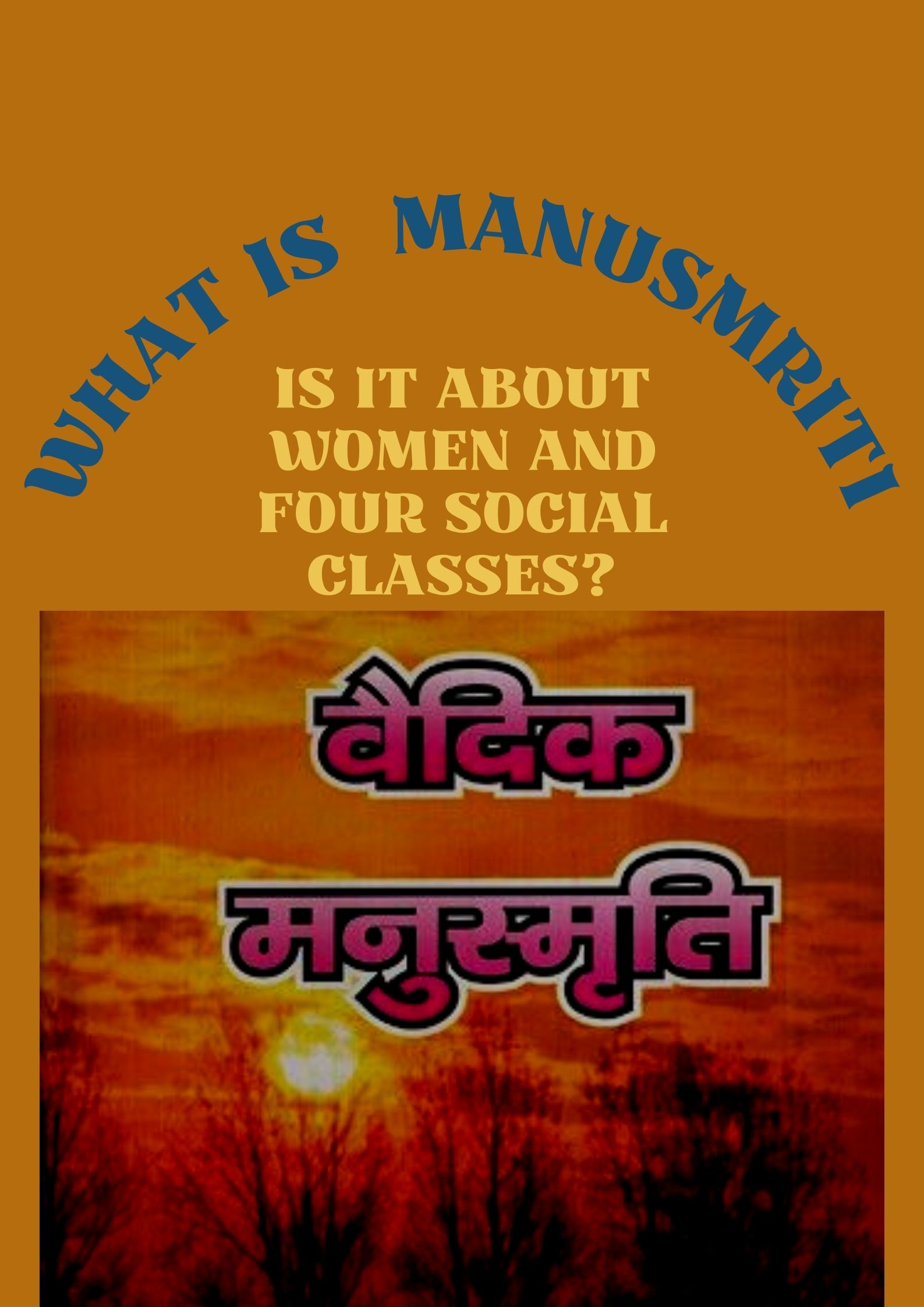The Manusmriti, also known as the Laws of Manu. An ancient Hindu text provides guidelines for leading a moral and good life. It covers various aspects of personal conduct, family life, social norms, and law. This text is believed to have been written by Manu, an ancient sage and lawmaker. It is considered one of Hinduism’s most important and influential texts. The Manusmriti continues to be studied and debated in modern times for its historical significance and applicability to present issues.

The Manusmriti, an ancient Hindu text, discusses the role of women and the caste system in society. It represents various rules and laws regarding the conduct and behaviour of women and individuals from different castes. The text class women into three classes based on their marital status and family lineage.
It also specifies the duties and duties of each caste and restricts inter-caste marriage and social interaction. The Manusmriti has been a subject of debate and criticism for its treatment of women and the caste system. While some consider it a reflection of ancient India’s social norms and practices, others view it as a source of abuse and unfairness.
Main topics of Manusmriti:
The Manusmriti, an ancient Hindu text, covers various topics related to personal conduct, family life, social norms, and laws. Some of the main issues discussed in the text include:
Dharma:
The concept of dharma, or duty, is central to the Manusmriti. It guides fulfilling one’s responsibilities and duties towards oneself, family, society, and the divine.
Women:
The Manusmriti outlines the role of women in society and divides them into three classes based on their marital status and family lineage. It also discusses various rules and regulations related to the conduct and behaviour of women.
Caste system:
The text divides society into four main castes and orders specific duties and powers for each. It restricts inter-caste marriage and social reaction and outlines the punishments for disobeying these rules.
Laws and punishments:
The Manusmriti provides detailed laws and penalties for crimes ranging from theft and assault to affair and murder.
Education:
The text indicates the importance of education. It provides rules on the types of subjects that should be studied and the qualities of a good teacher.
Administration:
The Manusmriti discusses various aspects of governance, including the duties of kings and other officials, the authority of justice, and the importance of maintaining law and order.
Overall, the Manusmriti is a complete text. That guides various aspects of life and has been studied and debated for centuries.
Some points about Womens in Manusmriti:
The Manusmriti is an ancient Hindu text. Recognizes the vital role of women in society and guides how to uphold their dignity and honour. The following are some of the points about women in the Manusmriti:
Respect and protection:
According to the Manusmriti, respecting and protecting women is necessary. Their fathers, husbands, and sons are responsible for confirming their safety. According to the Manusmriti, any man who insults or harms a woman will be punished..
Spiritual equality:
The Manusmriti recognizes that women are divinely equal to men and can attain the same learning, enlightenment, and life through spiritual practices.
Empowerment:
The text inspires women to take an active role in society and join in decision-making processes. It recognizes the essential contributions of women to various fields, including medicine, arts, and governance.
Rights and freedoms:
The Manusmriti recognizes the right of women to inherit property and engage in trade and commerce. It also states that women can choose their husbands and remarry if they become widowed.
Categories of women:
The Manusmriti arranged women into three classes based on their family lineage and marital status. The highest class contains women born to noble families and marrying noble men. At the same time, the lowest category contains women born to Shudra families and marrying men of any class.
Marriage:
The Manusmriti stresses the importance of marriage for women. That a suitable husband should be chosen for them by their father, and it also orders rules related to the conduct and behaviour of women within marriage.
Education and knowledge:
The text inspires women’s education. It identifies that they should be taught household skills, the Vedas, and other sacred texts. It also recognizes the importance of knowledge and wisdom in a woman’s life.
Restrictions on women:
The Manusmriti prescribes various rules on women’s dress, behaviour, and social interaction. For example, it prohibits women from wearing revealing clothing, interacting with men unrelated to them, and participating in certain religious rituals.
While the Manusmriti guides the role of women in society, its rules and regulations may seem restrictive and outdated by modern standards.
Overall, the Manusmriti promotes a positive view of women and emphasizes their dignity, worth, and contribution to society. At the same time, some of its rules and regulations may seem restrictive by modern standards. It is essential to view the text in its historical and cultural context. It is to promote gender equality and empowerment in our modern society.
The Manusmriti about Four Social Classes:
The Manusmriti divides society into four social classes, known as varnas, based on a person’s occupation and family lineage. The following are some critical points about the four social classes in the Manusmriti:

- Hindu society traditionally recognizes four classes, with Brahmins being the highest class. Brahmins are typically priests and scholars. Brahmins are responsible for teaching and preserving the Vedas and other sacred texts because they are considered society’s purest and most knowledgeable members.
- The second class has made up of Kshatriyas, who are rulers and warriors. Their primary responsibility is to protect society and enforce laws. So Kshatriyas are expected to be brave, just, and generous in their actions.
- Vaishyas, the third class, are typically merchants and farmers. The third class provide goods and services to society and is expected to be honest and hardworking.
- The lowest class is Shudras, who are typically labourers and servants. Their primary role is to serve the other three types. However, they have not allowed to study or practice the Vedas.
While the Manusmriti guides the social classes in Hindu society, its rules and regulations may seem restrictive and outdated by modern standards. It is essential to view the text in its historical and cultural context. And to work towards promoting social equality and inclusion in our modern society.
The Manusmriti about Caste System:
The Manusmriti, an ancient Hindu text, guides the caste system in Hindu society. The following are some key points related to caste in the Manusmriti:
Manusmriti-Birth-based caste system:
The Manusmriti establishes a caste system that determines a person’s social status based on their family lineage at birth. In other words, a person’s caste is determined by the caste of their parents and ancestors.
Manusmriti-Duties and responsibilities:
The Manusmriti prescribes different duties and responsibilities for each caste. For example, Brahmins had expected to teach and preserve the Vedas. At the same time, Kshatriyas wished to protect society and enforce the laws.
Manusmriti-Restrictions and privileges:
The Manusmriti prescribes various rules and rights for each caste. For example, Shudras had not allowed to study or practice the Vedas. At the same time, Brahmins are entitled to receive gifts and donations from society.
Manusmriti-Inter-caste relationships:
The Manusmriti prohibits intercaste relationships between members of different castes, such as marriage or social interaction. It prescribes strict rules related to social interaction and behaviour within each caste.

It is important to note that the Manusmriti guides Hindu society’s caste system. Its rules and regulations are similarly restrictive and outdated by modern standards. It is essential to view the text in its historical and cultural context because it is to work towards promoting social equality and inclusion in our modern society.
In conclusion,
So the Manusmriti reflects the beliefs and practices of ancient Indian society. It also serves as a valuable source of insight into the history and culture of the region. Generally, approaching the text with an open mind and a critical perspective is essential. And to work towards promoting social equality and inclusion in our modern society.
For more articles click here 21Hashtags.
